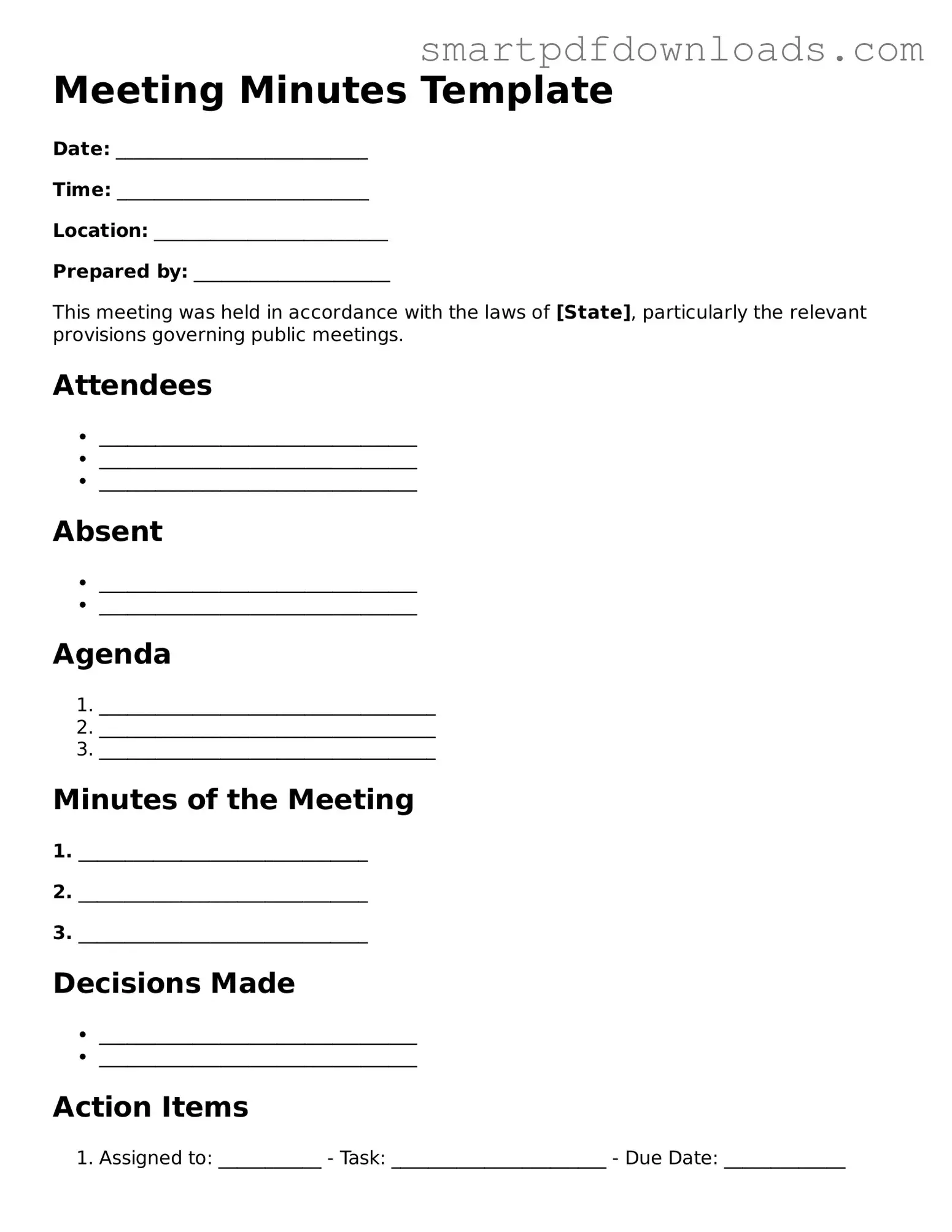Meeting Minutes Template
Date: ___________________________
Time: ___________________________
Location: _________________________
Prepared by: _____________________
This meeting was held in accordance with the laws of [State], particularly the relevant provisions governing public meetings.
Attendees
- __________________________________
- __________________________________
- __________________________________
Absent
- __________________________________
- __________________________________
Agenda
- ____________________________________
- ____________________________________
- ____________________________________
Minutes of the Meeting
1. _______________________________
2. _______________________________
3. _______________________________
Decisions Made
- __________________________________
- __________________________________
Action Items
- Assigned to: ___________ - Task: _______________________ - Due Date: _____________
- Assigned to: ___________ - Task: _______________________ - Due Date: _____________
Next Meeting
Date: ___________________________
Time: ___________________________
Location: _________________________
Additional Notes
_____________________________________________________________
_____________________________________________________________
